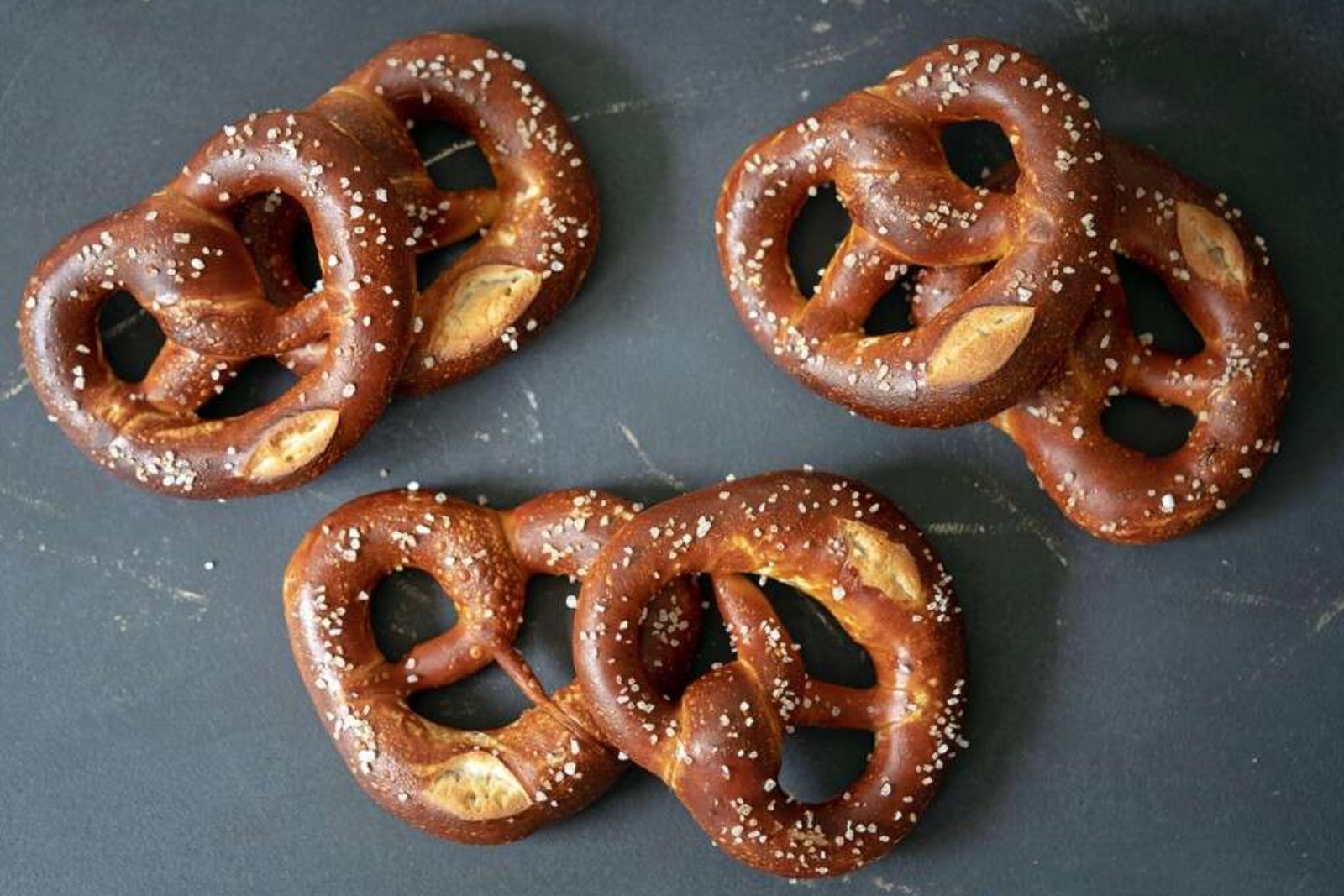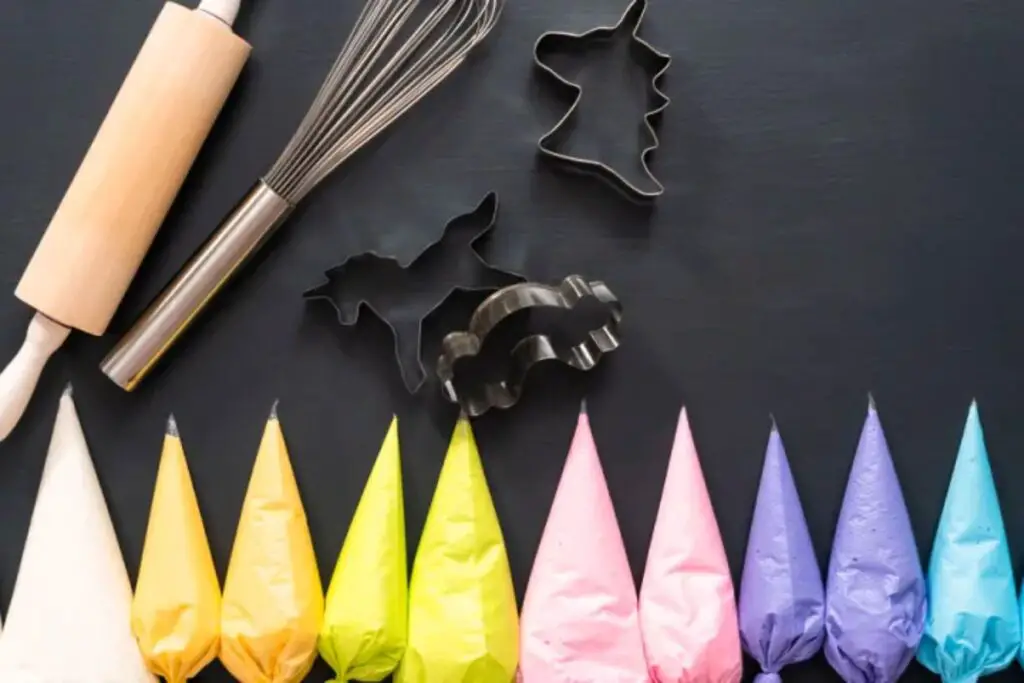
Pretzels are a popular snack loved by many for their unique shape, salty taste, and crunchy texture. Whether you’ve made a big batch or purchased more than you can eat in a short period, freezing pretzels is a great way to preserve them for later consumption. Freezing pretzels properly will help maintain their delicious taste and prevent them from becoming stale. In this article, we’ll walk you through a step-by-step guide on how to freeze pretzels to ensure they remain fresh and enjoyable whenever you’re ready to indulge.
Here are simple steps on freezing Pretzels:
Step 1: Choose the right pretzels
Selecting the right pretzels is a crucial step in ensuring successful freezing and maintaining their quality over time. Here’s why it’s important to choose fresh pretzels and how their condition affects the freezing process:
- Texture and Taste: Fresh pretzels have the ideal texture and taste that make them enjoyable to eat. Whether you prefer soft or hard pretzels, freezing them while they are still fresh ensures that they retain their original characteristics when thawed and reheated later. Stale or old pretzels might become too chewy or lose their crunchiness during freezing, diminishing the overall eating experience.
- Freezer Burn Prevention: Fresh pretzels have lower moisture content, which is essential for preventing freezer burn. Freezer burn occurs when the moisture inside the food forms ice crystals, leading to dry, discolored, and unpleasant-tasting spots. By selecting fresh pretzels, you reduce the risk of excess moisture and minimize the chances of freezer burn.
- Longer Shelf Life: Fresh pretzels have a longer shelf life, even before freezing. Ensuring that the pretzels are within their expiration date guarantees that they haven’t started to degrade in quality. Freezing them at their best condition extends their shelf life, allowing you to enjoy them at your convenience for an extended period.
- Optimal Freezing Process: When pretzels are fresh, they freeze more efficiently. The freezing process involves the formation of ice crystals, and starting with a fresh product ensures that these crystals are small and evenly distributed. As a result, the pretzels maintain their integrity, texture, and taste better after thawing.
- Safe Consumption: Selecting pretzels that are within their expiration date ensures that they are safe for consumption. Eating expired or spoiled pretzels, even after freezing, can lead to foodborne illnesses or unpleasant digestive experiences.
Step 2: Allow pretzels to cool
Allowing pretzels to cool down completely before freezing is an essential step in preserving their quality and preventing undesirable changes during the freezing process. Here’s why it’s crucial to let warm pretzels cool before placing them in the freezer:
- Condensation Prevention: Warm pretzels contain residual heat and moisture from the baking process. When placed directly in the freezer, this trapped heat and moisture can create condensation within the packaging. As the warm pretzels cool down, the moisture turns into ice crystals, which can negatively impact the pretzels’ texture and overall quality. Excess condensation can lead to soggy or mushy pretzels once thawed, making them less enjoyable to eat.
- Texture Preservation: Allowing pretzels to cool down to room temperature ensures that they maintain their intended texture. Warm pretzels might still be soft or have a slightly doughy center, which is typical right after baking. However, freezing warm pretzels with this residual heat can lead to uneven freezing and result in an inconsistent texture when thawed.
- Even Freezing: Cooling the pretzels before freezing helps ensure that the entire pretzel freezes uniformly. Uneven freezing can cause ice crystals to form unevenly within the pretzel, leading to a change in texture and possibly affecting the taste as well. By cooling the pretzels first, you set the stage for a smooth and consistent freezing process.
- Preservation of Freshness: Allowing pretzels to cool down before freezing helps lock in their freshness. As they cool, any remaining steam or excess moisture dissipates, and the pretzels reach an optimal state for freezing. This step ensures that the pretzels maintain their best quality and taste when thawed and reheated later.
- Prevention of Frostbite: Placing warm pretzels directly in the freezer can lead to a phenomenon known as “frostbite.” Frostbite occurs when the outer layer of the food freezes too quickly, sealing in moisture and making the texture less desirable. By letting the pretzels cool down first, you reduce the risk of frostbite and maintain a better overall texture.
Step 3: Prepare airtight packaging
Proper airtight packaging is essential when freezing pretzels to preserve their taste, texture, and overall quality. Using ziplock bags or vacuum-sealed bags offers an effective way to safeguard pretzels from freezer burn and maintain their freshness. Here’s why airtight packaging is crucial and how different options like ziplock bags and vacuum-sealed bags work for this purpose:
- Freezer Burn Prevention: Freezer burn occurs when air comes into contact with the surface of the pretzels, causing the moisture on the pretzels to evaporate and leave behind dry, discolored spots. Airtight packaging creates a barrier that minimizes the exposure of pretzels to air, reducing the risk of freezer burn significantly. By sealing the pretzels tightly, you protect them from the drying effects of the freezer air.
- Retention of Taste and Texture: Airtight packaging helps maintain the original taste and texture of the pretzels. When exposed to air, pretzels can become stale, lose their crispness, and absorb odors from the freezer. By using airtight bags, you preserve the pretzels’ distinct flavors and keep them crunchy or soft, depending on their original texture.
- Prevention of Debris Contamination: Clean and debris-free bags are essential when freezing pretzels. Any residue or debris inside the bag can compromise the quality and hygiene of the pretzels. Ensuring that the bags are free from any foreign particles guarantees that the pretzels remain in their best condition during freezing and thawing.
- Ziplock Bags: Ziplock bags are a convenient option for freezing pretzels. They are easily accessible, come in various sizes, and provide a secure closure with a zip seal. Before sealing the bag, make sure to press out as much air as possible to create a snug fit around the pretzels. This prevents air from entering the bag and protects the pretzels from freezer burn.
- Vacuum-Sealed Bags: Vacuum-sealed bags take airtight packaging to the next level. They remove the air from the bag entirely before sealing, creating a vacuum environment that prevents any air from reaching the pretzels. This process is highly effective in preventing freezer burn and maintaining the pretzels’ freshness and quality.
Can I use airtight containers instead of bags?
Yes, airtight containers are suitable for freezing pretzels. Ensure a snug fit to minimize air exposure. Containers are ideal for preserving pretzel shape, but follow the same guidelines as bags for successful freezing.
Step 4: Arrange the pretzels in the packaging
Properly arranging the pretzels inside the chosen packaging is a crucial step in freezing them effectively and preserving their individual integrity. Here’s why arranging the pretzels in a single layer and avoiding stacking or overcrowding is important, along with the benefits of using multiple bags for freezing larger quantities:
- Even Freezing: By laying the pretzels flat in a single layer, you ensure that they freeze evenly. Individual pretzels have a consistent surface area exposed to the freezer’s cold air, allowing them to freeze at a similar rate. This helps maintain uniform texture and taste across all pretzels once they are thawed and reheated.
- Prevention of Sticking and Clumping: Avoiding stacking or overcrowding pretzels is essential to prevent them from sticking together and forming clumps. When pretzels freeze in close contact with each other, they can become fused, making it difficult to separate them later without damaging their shape or texture.
- Easier Portioning: Freezing pretzels in a single layer allows for easier portioning when you want to thaw and reheat only a few at a time. You can remove individual pretzels from the bag without defrosting the entire batch, which is particularly convenient for quick snacks or smaller servings.
- Preserving Shape and Appearance: By arranging the pretzels carefully, you help maintain their original shape and appearance. Stacking or overcrowding can lead to deformation, especially for soft pretzels, which have a more delicate structure.
- Efficient Use of Space: For larger quantities of pretzels, using multiple bags and evenly spacing them allows for more efficient use of freezer space. It prevents excessive crowding, ensuring that the pretzels have enough room to freeze properly without compromising the quality of neighboring pretzels.
- Reducing Thawing Time: When pretzels are frozen in a single layer, they thaw more quickly and evenly. This means you can enjoy your frozen pretzels sooner without having to wait for the entire batch to defrost.
Step 5: Remove excess air
Removing excess air from the packaging is a crucial step in freezing pretzels to prevent freezer burn and maintain their quality during storage. Here’s why eliminating air is important and how to do it properly using both ziplock bags and vacuum-sealed bags:
- Freezer Burn Prevention: Air contains moisture, and when trapped inside the packaging with the pretzels, it can lead to freezer burn. Freezer burn occurs when the moisture on the pretzels evaporates and forms ice crystals on the surface, resulting in dry and discolored spots. By removing excess air, you reduce the amount of moisture that can come into contact with the pretzels, significantly lowering the risk of freezer burn.
- Preserving Texture and Taste: Air can also cause pretzels to become stale and lose their desired texture and taste. By removing air from the packaging, you create a more controlled environment for the pretzels, maintaining their freshness and preventing them from absorbing unwanted odors from the freezer.
- Ziplock Bags: For ziplock bags, the process of removing excess air is simple. After placing the pretzels inside the bag, gently press the bag to expel as much air as possible. Start from one end of the bag and work your way to the other, pushing the air towards the opening. Once the air is pushed out, quickly seal the bag tightly to prevent air from getting back in.
- Vacuum-Sealed Bags: Vacuum-sealed bags offer a more advanced method of removing air. Using a vacuum sealer, you can effectively remove all the air from the bag before sealing it. Place the pretzels inside the bag and ensure they are evenly spaced and arranged in a single layer. Then, insert the open end of the bag into the vacuum sealer and activate the appropriate setting to remove the air. The vacuum sealer will suck out all the air, creating a tightly sealed, air-free environment for the pretzels.
Step 6: Label and date the packages
Labeling and dating the packages when freezing pretzels is a crucial step for organization and ensuring that you can enjoy the pretzels at their best quality within a specific timeframe. Here’s why this step is important and how it helps you keep track of the pretzels’ freshness:
- Easy Identification: Labeling each package with the contents (pretzels) makes it easy to identify what’s inside without having to open the bags. This is especially helpful if you have different types of pretzels or various snacks stored in the freezer. It saves time and prevents unnecessary searching and opening of multiple packages.
- Date of Freezing: Including the date of freezing on the label allows you to know exactly when the pretzels were placed in the freezer. This information is essential for managing their storage time and determining when they should be consumed. By knowing the date of freezing, you can prioritize eating the older batches first to prevent any pretzels from exceeding their recommended storage time.
- Rotation and Freshness: Labeling and dating the packages enables you to implement a first-in, first-out (FIFO) system. This means that you can use the oldest pretzels before moving on to newer batches. This rotation ensures that all the pretzels get consumed while still within their optimal freshness and quality.
- Storage Duration: Knowing the date of freezing also helps you keep track of the pretzels’ recommended storage duration. As you mentioned, pretzels can stay fresh for up to 2-3 months in the freezer. By labeling the packages, you can easily check how long they have been frozen and ensure you consume them within the recommended timeframe.
- Reducing Food Waste: Properly labeling and dating the packages reduce the chances of forgetting about frozen pretzels and accidentally letting them go past their prime. By keeping track of their storage time, you can plan your snacks accordingly and avoid food waste.
Step 7: Freeze the pretzels
Freezing the pretzels properly is the final step in the process of preserving their quality for future consumption. The way you arrange and store the filled bags in the freezer can significantly impact the pretzels’ texture and overall condition. Here’s why it’s important to follow these guidelines when freezing the pretzels:
- Even Freezing: Placing the filled bags on a flat surface in the freezer allows the pretzels to freeze evenly. When the pretzels are evenly spaced, each individual piece has a consistent exposure to the cold air, ensuring that they freeze at the same rate. This helps maintain uniform texture and taste across all pretzels, preventing any uneven freezing that could result in differences in quality.
- Avoid Stacking: Stacking items on top of the filled bags can lead to uneven pressure distribution, causing the pretzels to become crushed or broken. The weight of other items can distort the shape of the pretzels and compromise their appearance and texture. It’s best to keep the bags flat and separated to preserve the pretzels’ integrity.
- Minimize Contact: Ensuring that the bags are not stacked also reduces the chance of the pretzels sticking to each other during freezing. Sticking together can cause them to fuse, making them difficult to separate once frozen. Keeping them flat and evenly spaced minimizes the risk of this happening.
- Easy Access: Placing the filled bags on a flat surface allows for easy access and organization in the freezer. You can stack other items or place them in the freezer around the bags, creating a neat and efficient storage system.
How long can I store frozen pretzels?
Frozen pretzels can be stored for about 2-3 months without significant loss of quality. Properly packaged and labeled pretzels help track storage time accurately. Consume them within this timeframe for the best taste and texture.
Step 8: Thaw and reheat
Thawing and reheating frozen pretzels correctly is essential to bring back their delicious taste and desirable texture. Improper thawing and reheating methods can lead to changes in texture and overall quality. Here’s why following these steps is crucial for enjoying the frozen pretzels at their best:
- Thawing at Room Temperature: Allowing the frozen pretzels to thaw at room temperature for a few minutes is a gentle and gradual process. Thawing at room temperature helps prevent sudden temperature shocks that can affect the pretzels’ texture, such as making them too chewy or soggy. It also reduces the risk of overcooking or burning the pretzels during reheating.
- Restoring Crispy Texture: The baking process in the oven helps to restore the pretzels’ original crispy texture. The oven’s dry heat helps remove any excess moisture that might have formed during freezing or thawing, ensuring the pretzels stay crunchy and enjoyable.
- Oven Reheating vs. Microwave: Reheating the pretzels in the oven is preferable to using the microwave. The microwave’s moisture-rich environment can cause the pretzels to become chewy or lose their crispness. In contrast, the dry heat of the oven ensures a consistent and even reheating process, enhancing the pretzels’ texture and taste.
- Even Reheating: Preheating the oven to 350°F (175°C) ensures that the pretzels heat evenly throughout, preventing some parts from being overcooked or undercooked. The recommended reheating time of about 5-10 minutes ensures that the pretzels are warmed through without becoming overly crispy or dry.
Other related questions
Can I refreeze pretzels?
Yes, you can refreeze pretzels once they’ve been thawed, but it’s best to minimize the number of freeze-thaw cycles to maintain quality. Refreezing can affect texture and taste due to moisture loss and ice crystal formation. Consume refrozen pretzels promptly for optimal freshness.
How do I know if the pretzels have gone bad after being frozen?
Inspect for signs of freezer burn, like dry spots or discoloration, which indicate loss of moisture. Detecting off-putting odors or flavors caused by prolonged storage or improper packaging. Texture changes, such as extreme sogginess or excessive hardness, may signal spoilage.
Can I freeze both soft and hard pretzels?
Certainly, both soft and hard pretzels can be frozen effectively. Soft pretzels might retain a slightly better texture after thawing due to their higher moisture content. Ensure proper packaging to maintain quality during freezing and thawing.
Can I freeze homemade pretzels with various toppings?
Certainly, homemade pretzels with various toppings can be frozen. Ensure they’re cooled before freezing to prevent excess moisture. Toppings might affect texture slightly, but proper packaging preserves overall quality during freezing and thawing.
Can I freeze pretzels with salt?
Yes, you can freeze pretzels with salt. However, the salt might dissolve slightly during freezing and thawing, potentially affecting its texture. Consider adding fresh salt after reheating to restore the desired flavor.
Are frozen pretzels safe to eat after a power outage?
If frozen pretzels have fully thawed due to a power outage, their quality and safety may be compromised. Prolonged exposure to higher temperatures could lead to bacterial growth, affecting taste and texture. Consume them promptly if they’ve thawed, and prioritize safety based on duration and temperature of the outage.








